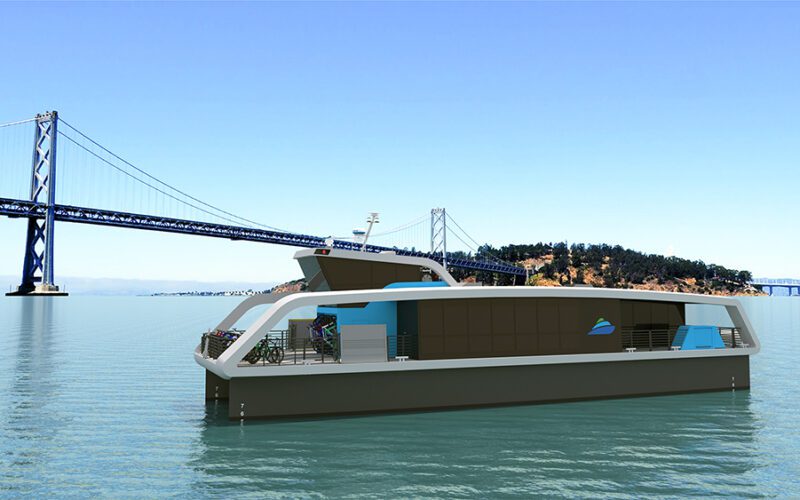
Efforts by the San Francisco Bay Ferry transit service to purchase three high-speed battery ferries are moving forward with the help of an $11 million Federal Transit Administration grant, it was announced Sept. 16.
The grant is expected to fund SF Bay Ferry’s trio of 150-passenger battery-powered ferries that would serve Treasure Island, Mission Bay, Downtown San Francisco and other San Francisco waterfront communities.
“San Francisco’s waterfront is thriving, and this award will make sure that they are connected and accessible using state-of-the-art zero-emission congestion-reducing ferries,” SF Bay Ferry Board of Directors Chair Jim Wunderman said.
So far, the ferry service has garnered about $136 million from local, state and federal agencies to start its Rapid Electric Emission-Free Ferry (REEF) Program, a multi-phased endeavor that could include purchasing a pair of 400-passenger battery-electric ferries.
The program would also convert four diesel 400-passenger ferries to zero-emission technology, electrify terminal capabilities throughout the system and expand and electrify its Central Bay Operations and Maintenance Facility in Alameda.
SF Bay Ferry, which released vessel designs in August, expects to award procurement contracts before the end of the year, with first vessel delivery anticipated for 2026.
The initial phases of the REEF Ferry Program include:
- Construction of three small battery-electric ferries to operate on a new San Francisco waterfront neighborhoods network.
- Construction of two large battery-electric ferries to operate service to Oakland and Alameda.
- Construction of a new electric charging float for the Downtown San Francisco Ferry Terminal.
- Electric charging conversion for the Treasure Island Ferry Terminal.
- Expansion and electrification of the Central Bay Operations and Maintenance Facility in Alameda.
Planning for future phases of the REEF Ferry Program include additional float conversion for East Bay and San Francisco terminals, conversion of the 400-passenger Hydrus class vessels to battery electric and construction or conversion of up to 11 additional small or medium battery-electric ferries.
San Diego-based Aurora Marine Design (AMD) completed the vessel’s design in partnership with SF Bay Ferry and other REEF collaborators.
According to WETA, the design features highly efficient propulsors that enable the vessel to dock more rapidly and efficiently than traditional ferries, plus “inherently safe” battery technology that supports rapid charging and wider, self-deploying boarding ramps that “greatly improve” the disembarkation process.
When in service, the vessels will connect Treasure Island and Mission Bay to Downtown S.F. in as little as 15 minutes, according to SF Bay Ferry.
Swedish energy storage firm Echandia, which is the battery supplier for REEF vessels, broke ground in July on a manufacturing facility in Marysville, Wash. with the intent to ensure that the new zero-emission vessels would be powered by American-made batteries.
The ferry service is part of the Water Emergency Transportation Authority, or WETA, which provides ferry service to the San Francisco Bay area.

